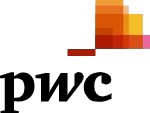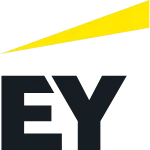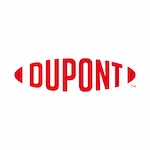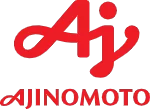Dosimeter & Radiation Monitoring Badges Market Size, Production, Sales, Average Product Price, Market Share, Import vs Export

- Published 2025
- No of Pages: 120+
- 20% Customization available
Expansion in Medical Imaging Drives Dosimeter & Radiation Monitoring Badges Market
The growth of diagnostic imaging procedures across the globe is significantly contributing to the expansion of the Dosimeter & Radiation Monitoring Badges Market. As healthcare facilities increasingly adopt high-radiation technologies such as CT scans, fluoroscopy, and PET scans, the need to monitor occupational exposure has become indispensable. For instance, the number of CT scans performed annually worldwide has crossed 90 million, and this number continues to rise. Medical professionals and radiology technicians working in close proximity to radiation-emitting equipment are required to wear dosimeters, ensuring consistent tracking of accumulated exposure levels.
The rising use of interventional radiology in cardiac and neurological procedures is further amplifying the use of radiation. Hospitals and diagnostic centers are increasingly investing in radiation monitoring infrastructure to meet internal safety protocols and external regulatory requirements. These trends are making the healthcare sector a dominant end-user, strengthening the overall Dosimeter & Radiation Monitoring Badges Market.
Nuclear Energy Expansion Strengthens the Dosimeter & Radiation Monitoring Badges Market
Global interest in nuclear energy as a low-emission power source is catalyzing growth in the Dosimeter & Radiation Monitoring Badges Market. Several countries are either building new nuclear power plants or extending the life of existing reactors to meet energy needs. For instance, recent nuclear projects in Asia and Eastern Europe have led to a surge in demand for radiation protection infrastructure.
Personnel working in nuclear facilities must wear dosimeters throughout their shifts to track exposure and ensure safety. In environments where radioactive materials are handled daily, these badges serve as essential tools for compliance and emergency response. This growing dependency on nuclear power significantly contributes to the expansion of the Dosimeter & Radiation Monitoring Badges Market.
Technological Advancements Drive Product Evolution in the Dosimeter & Radiation Monitoring Badges Market
Technological innovation is transforming the design and functionality of radiation monitoring solutions. Traditional film badge dosimeters are being rapidly replaced by electronic personal dosimeters that provide real-time data, greater accuracy, and wireless communication features. These modern devices support cloud-based monitoring, integration with personnel tracking systems, and long-term data storage.
For example, dosimeters now offer Bluetooth-enabled synchronization with mobile apps for immediate exposure updates and historical tracking. Such features are particularly valuable in fast-paced environments like hospitals, labs, and industrial sites. These technological shifts are not only enhancing efficiency but also increasing the adoption rate, accelerating the Dosimeter & Radiation Monitoring Badges Market growth trajectory.
Workplace Safety and Regulatory Enforcement Accelerate Dosimeter & Radiation Monitoring Badges Market Adoption
In industries dealing with ionizing radiation, employee safety regulations mandate the use of radiation monitoring badges. Regulatory enforcement in regions such as North America, Europe, and parts of Asia has intensified, requiring organizations to maintain strict safety standards.
Enterprises must prove compliance by monitoring worker exposure to radiation and maintaining detailed records. These regulations create recurring demand for dosimeter badges, software systems for analysis, and periodic calibration services. The implementation of stricter norms by health and labor authorities is directly strengthening the Dosimeter & Radiation Monitoring Badges Market as safety becomes non-negotiable.
Industrial Applications Broaden Scope of the Dosimeter & Radiation Monitoring Badges Market
Beyond healthcare and nuclear power, several other industries contribute to the growing demand in the Dosimeter & Radiation Monitoring Badges Market. Sectors such as oil and gas, aerospace, food irradiation, manufacturing, and defense frequently involve processes where exposure to radiation is possible. In oil exploration, for instance, gamma-ray tools are used for subsurface analysis, requiring field engineers to wear dosimeters.
Similarly, in aerospace manufacturing, non-destructive testing (NDT) using radiographic techniques is widespread. Employees involved in such procedures need continuous exposure tracking, further emphasizing the cross-sector necessity of radiation monitoring. The expansion of industrial applications is contributing to a broader consumer base, significantly driving the Dosimeter & Radiation Monitoring Badges Market.
Remote Monitoring and Cloud Platforms Reshape the Dosimeter & Radiation Monitoring Badges Market
Remote data access and cloud-enabled radiation monitoring platforms have revolutionized the approach to occupational radiation safety. Organizations are now able to track radiation exposure in real time, analyze patterns, and respond immediately to anomalies. This is especially crucial for large-scale industrial sites, research labs, and emergency responders.
The ability to monitor dosimeter data remotely also enables centralized compliance management, simplifying audits and reducing administrative workload. As enterprises move towards digital transformation, such capabilities are becoming a core requirement, pushing forward the Dosimeter & Radiation Monitoring Badges Market.
Dosimeter & Radiation Monitoring Badges Market Size Reflects Strong Growth Momentum
The Dosimeter & Radiation Monitoring Badges Market Size has shown consistent growth, fueled by sustained demand from critical sectors. As per Datavagyanik, the market size is estimated to have surpassed USD 1.2 billion by 2024 and is on track to double by 2032. This reflects a compounded annual growth rate supported by rising healthcare infrastructure investments, increased nuclear activities, and industry-wide emphasis on safety.
The market dynamics point towards a long-term upward trajectory. The expanding scope of applications, coupled with innovations in wearable technology and regulatory oversight, continues to propel the Dosimeter & Radiation Monitoring Badges Market Size to new heights.
Wearable Innovation and Miniaturization Boost Market Penetration
Modern radiation badges are becoming more user-friendly, lightweight, and discreet, thanks to breakthroughs in miniaturization. Compact devices that can be clipped to a collar, wrist, or even integrated into a smart ID card are making it easier for workers to comply with monitoring protocols.
This shift is particularly effective in high-turnover environments such as construction, where ease of use determines adherence to safety practices. The convenience of new badge designs is leading to higher adoption rates, further expanding the Dosimeter & Radiation Monitoring Badges Market across temporary and permanent workforces alike.
Emergency Response Preparedness Influences Market Dynamics
Emergency services, disaster response teams, and hazardous material units are increasingly relying on dosimeter badges for real-time safety assurance during crisis situations. In scenarios involving radiological threats, accurate exposure tracking can be a matter of life and death.
By equipping first responders with advanced dosimeters, municipalities and federal agencies are ensuring preparedness for worst-case scenarios. This preparedness strategy plays a key role in strengthening the Dosimeter & Radiation Monitoring Badges Market, as public safety becomes a central investment theme in national budgets.
Rising Awareness and Educational Campaigns Fuel Market Demand
Increasing awareness around radiation safety and occupational exposure is driving growth from grassroots levels. Educational institutions, training centers, and workplace seminars are emphasizing the importance of personal radiation protection. Campaigns around radiation awareness are influencing employers to proactively adopt dosimeter badges as a standard issue for workers.
This heightened consciousness has created a ripple effect, prompting even small enterprises to invest in monitoring infrastructure. The cultural shift towards prioritizing health and safety is a critical growth driver of the Dosimeter & Radiation Monitoring Badges Market.
“Track Country-wise Dosimeter & Radiation Monitoring Badges Production and Demand through our Database”
-
-
- Dosimeter & Radiation Monitoring Badges sales volume database for 30+ countries worldwide
-
North America Leads Global Dosimeter & Radiation Monitoring Badges Market with Strong Regulatory Backbone
North America commands a significant share in the Dosimeter & Radiation Monitoring Badges Market due to its stringent radiation safety mandates and well-established nuclear and healthcare infrastructure. For instance, the United States has over 90 nuclear reactors and one of the highest densities of diagnostic imaging centers globally. These facilities regularly employ radiation workers, requiring continuous monitoring via dosimeter badges. Datavagyanik indicates that North America accounted for over 35% of the global market share in 2024, driven by both public and private sector investments in occupational health and safety.
The United States Department of Energy and Occupational Safety and Health Administration (OSHA) policies mandate the use of personal radiation dosimeters in regulated environments. With increasing emphasis on compliance and digital monitoring, the Dosimeter & Radiation Monitoring Badges Market in North America continues to grow steadily, supported by high product penetration across medical, defense, and industrial applications.
Europe’s Accelerating Nuclear Program Expands the Dosimeter & Radiation Monitoring Badges Market
Europe is undergoing a resurgence in nuclear energy expansion to meet decarbonization goals. Countries such as France, the United Kingdom, and Finland have increased investments in nuclear reactor upgrades and new plant development. As a result, the demand for radiation monitoring infrastructure, including dosimeter badges, has grown significantly.
In addition, the European medical sector’s integration of advanced diagnostic imaging technologies further supports market expansion. For example, Germany has witnessed a 12% annual rise in MRI and CT scan usage over the past five years. This has led to increased procurement of radiation monitoring devices for medical personnel. The Dosimeter & Radiation Monitoring Badges Market in Europe is also influenced by the region’s comprehensive worker protection legislation, which requires frequent exposure audits and monitoring.
Asia Pacific Emerges as Fastest Growing Region in the Dosimeter & Radiation Monitoring Badges Market
Asia Pacific is recording the fastest compound annual growth rate in the Dosimeter & Radiation Monitoring Badges Market, projected at over 9% CAGR from 2025 to 2032, as per Datavagyanik. This growth is attributed to rapid industrialization, large-scale healthcare infrastructure development, and expansion of nuclear power initiatives in countries such as China, India, and South Korea.
For instance, China currently operates 55 nuclear reactors with another 21 under construction. Meanwhile, India’s growing network of radiology clinics and diagnostic labs has increased the need for standardized radiation safety practices. These developments translate to substantial growth in demand for dosimeter badges. Additionally, the rising public awareness around occupational safety is influencing corporations to invest in radiation monitoring technologies, further driving the Dosimeter & Radiation Monitoring Badges Market across Asia Pacific.
Latin America and Middle East Open New Opportunities in the Dosimeter & Radiation Monitoring Badges Market
Emerging economies in Latin America and the Middle East are gradually incorporating radiation safety protocols in their industrial and medical domains. Brazil, for instance, has been investing in cancer treatment centers that utilize high-energy radiation devices, requiring stringent monitoring systems for medical staff.
Similarly, the United Arab Emirates’ Barakah Nuclear Energy Plant has created demand for state-of-the-art radiation dosimetry systems. These regional developments may be in nascent stages but collectively represent untapped potential for the Dosimeter & Radiation Monitoring Badges Market. Datavagyanik anticipates a steady uptake in these regions as regulations and infrastructure mature.
Technological Advancements Drive Shift in Dosimeter & Radiation Monitoring Badges Manufacturing
Modern Dosimeter & Radiation Monitoring Badges Manufacturing processes are increasingly focused on automation, miniaturization, and real-time data integration. For example, leading manufacturers have shifted from film-based production to solid-state and digital sensor technologies. This transition has reduced costs per unit and improved device accuracy.
Advances in flexible electronics are also influencing badge designs, allowing for comfortable, lightweight, and durable products. Manufacturers are incorporating chip-based sensors that enable continuous radiation data transmission via wireless networks. The emphasis is now on producing smart dosimeters that can integrate with central data platforms used in hospitals, laboratories, and nuclear facilities. These manufacturing trends are reshaping the competitive dynamics within the Dosimeter & Radiation Monitoring Badges Market.
Global Supply Chain Optimization Enhances Dosimeter & Radiation Monitoring Badges Manufacturing Efficiency
Dosimeter & Radiation Monitoring Badges Manufacturing has increasingly become a globalized process, with component sourcing, assembly, and distribution often spread across different regions. For instance, sensor components may be produced in Japan, while final assembly takes place in the United States or Germany. Manufacturers are optimizing their supply chains to reduce costs, increase responsiveness, and maintain quality standards.
This globalization also mitigates the risk of regional disruption and allows suppliers to scale efficiently as demand grows. The growing importance of just-in-time manufacturing, combined with intelligent logistics, ensures that manufacturers in the Dosimeter & Radiation Monitoring Badges Market can deliver solutions rapidly across continents.
Market Segmentation Based on Badge Type Adds Depth to Dosimeter & Radiation Monitoring Badges Market
The Dosimeter & Radiation Monitoring Badges Market can be segmented into types such as film badge dosimeters, thermoluminescent dosimeters (TLDs), optically stimulated luminescence dosimeters (OSLs), and electronic personal dosimeters (EPDs). Among these, EPDs are witnessing the highest growth due to their real-time monitoring capabilities and connectivity features.
For instance, electronic dosimeters with Bluetooth or Wi-Fi capability are increasingly used in hospitals and industrial zones to ensure continuous safety compliance. TLDs and OSLs, known for their sensitivity and reliability, continue to be widely used in research labs and nuclear installations. This product segmentation allows manufacturers to target different user groups and regulatory environments, enhancing the strategic depth of the Dosimeter & Radiation Monitoring Badges Market.
End-Use Segmentation Shapes Strategic Direction in the Dosimeter & Radiation Monitoring Badges Market
The Dosimeter & Radiation Monitoring Badges Market is segmented by end use into healthcare, nuclear energy, industrial, research, and military sectors. Healthcare remains the leading consumer due to continuous use of ionizing equipment in diagnostics and treatment. The nuclear segment, while smaller in volume, demands high precision and ruggedization, creating a premium market niche.
Industrial applications are emerging rapidly, especially in oil exploration, aviation, and construction sectors where NDT techniques are prevalent. Research institutions and military units, requiring specialized solutions for high-radiation environments, also contribute to niche demand. This segmentation enables targeted innovation and marketing, sustaining long-term growth in the Dosimeter & Radiation Monitoring Badges Market.
Pricing Trends Reflect Cost Efficiency and Feature Enhancements in the Dosimeter & Radiation Monitoring Badges Market
Pricing dynamics within the Dosimeter & Radiation Monitoring Badges Market are influenced by factors such as badge type, functionality, connectivity features, and service contracts. For example, film badges and TLDs are relatively cost-effective, priced between USD 15–30 per unit. These are often used in high-volume environments like hospitals where frequent replacements are common.
On the other hand, advanced electronic dosimeters with real-time alerts, cloud connectivity, and biometric integration can range from USD 100–400 per device. Despite higher costs, enterprises are increasingly opting for these premium devices due to the long-term benefits in data management, risk mitigation, and compliance.
Datavagyanik notes that price sensitivity is higher in developing regions, leading to a hybrid model where basic and advanced devices coexist. Bulk procurement and subscription models are also helping reduce upfront investment for smaller institutions, enabling broader adoption in the Dosimeter & Radiation Monitoring Badges Market.
Future of Dosimeter & Radiation Monitoring Badges Manufacturing Driven by Smart Integration
The future of Dosimeter & Radiation Monitoring Badges Manufacturing lies in the integration of AI, IoT, and predictive analytics. Manufacturers are experimenting with badges that not only record exposure but also forecast cumulative risk based on working conditions and historical data. This proactive safety approach is expected to redefine radiation management systems globally.
In addition, integration with employee ID systems, GPS tracking, and biometric verification is on the horizon, especially for security-sensitive environments such as nuclear power plants and defense facilities. These innovations are set to elevate the functional scope of dosimeters and reinforce their relevance in the evolving Dosimeter & Radiation Monitoring Badges Market.
“Dosimeter & Radiation Monitoring Badges Manufacturing Database”
-
-
- Dosimeter & Radiation Monitoring Badges top manufacturers market share for 30+ manufacturers
- Top 10 manufacturers and top 20 manufacturers of Dosimeter & Radiation Monitoring Badges in North America, Europe, Asia Pacific
- Dosimeter & Radiation Monitoring Badges sales dashboard, Dosimeter & Radiation Monitoring Badges sales data in excel format
-
Major Manufacturers Driving the Dosimeter & Radiation Monitoring Badges Market
The Dosimeter & Radiation Monitoring Badges Market is shaped by a set of influential manufacturers who lead through technology innovation, application-specific product portfolios, and global distribution capabilities. These companies continue to define competitive benchmarks by offering tailored solutions for healthcare, nuclear energy, industrial, and research sectors.
Landauer: A Longstanding Leader in the Dosimeter & Radiation Monitoring Badges Market
Landauer maintains a stronghold in the Dosimeter & Radiation Monitoring Badges Market through its full-spectrum radiation safety services. Its flagship product line, Luxel+, offers optically stimulated luminescence-based badges that are widely used in healthcare and research sectors. Landauer provides both hardware and dosimetry service plans, making it a turnkey provider for institutions needing radiation tracking, data reporting, and regulatory compliance.
Its high-volume processing capacity and legacy in radiation monitoring have given it a dominant share, particularly in the North American market. The company continues to expand into Asia and Europe through strategic partnerships and localized data centers.
Mirion Technologies: Driving Smart Dosimetry in the Dosimeter & Radiation Monitoring Badges Market
Mirion Technologies plays a critical role in modernizing radiation tracking. The Instadose+ badge series, which features USB and Bluetooth-enabled real-time dose readings, reflects the company’s focus on intelligent dosimetry. These badges eliminate the need for manual returns and batch analysis, making them ideal for high-frequency environments such as hospitals, laboratories, and nuclear facilities.
Mirion holds a competitive share in the Dosimeter & Radiation Monitoring Badges Market, particularly due to its ability to bundle digital ecosystem services. Its recent investments in AI-powered dose analytics and smart alerts have further increased its relevance among safety-conscious enterprises.
Thermo Fisher Scientific: Offering Versatility Across Industries
Thermo Fisher Scientific offers a wide portfolio of radiation monitoring instruments, including portable dosimeters, electronic personal devices, and area monitoring units. While it serves diverse sectors, it has gained traction in high-risk industrial and governmental operations where both individual and zone-based monitoring are critical.
Its dosimeter units are often deployed in combination with laboratory management systems and compliance dashboards, giving end-users a holistic safety view. This value-added approach allows Thermo Fisher Scientific to capture a robust market segment across North America and Europe.
Radiation Detection Company (RDC): Enabling Affordable Compliance
Radiation Detection Company focuses on cost-effective, scalable dosimetry solutions, especially for outpatient medical practices, dental clinics, and academic institutions. Its offerings include monthly and quarterly service models, which provide exposure reports without the need for internal management systems.
RDC’s strength lies in its simplified delivery model and its consistent track record with smaller organizations that seek compliance without high capital expenditure. This niche positioning gives it a respectable share in the Dosimeter & Radiation Monitoring Badges Market.
Ludlum Measurements: Industrial and Emergency Expertise
Ludlum Measurements provides ruggedized dosimeters and radiation detection equipment tailored for field use in nuclear response, energy, and environmental monitoring. Its dosimeters are designed for durability and long-life use, making them essential in conditions where environmental factors are harsh.
Its penetration in defense, environmental cleanup, and utility operations contributes to a modest but highly specialized share in the Dosimeter & Radiation Monitoring Badges Market.
Market Share Distribution by Manufacturer
In the current competitive landscape, Landauer holds the leading position with an estimated market share ranging between 20% to 25% globally. This is driven by its strong presence in the US and its high processing capacity. Mirion Technologies follows closely, capturing around 18% to 22%, owing to its technological innovations and expansion in digital dosimetry.
Thermo Fisher Scientific maintains a share in the range of 12% to 15%, driven by its cross-industry adaptability and global supply infrastructure. RDC holds a smaller share, estimated at 5% to 7%, but dominates within the segment of small-scale medical service providers. Other niche players, including Ludlum and region-specific manufacturers, collectively make up the remainder of the market.
Notable Product Lines Impacting the Dosimeter & Radiation Monitoring Badges Market
- Luxel+ (Landauer): Advanced OSL-based dosimeter with high sensitivity, long-term data retention, and environmental resistance.
- Instadose+ (Mirion Technologies): USB/Bluetooth badge with instant readings, customizable thresholds, and cloud data synchronization.
- RadEye G (Thermo Fisher): A high-precision dosimeter with graphical interface, sound alerts, and dual-purpose dose/area monitoring.
- RDC TLD Badges: Simpler thermoluminescent designs that cater to basic compliance and short-term radiation exposure monitoring.
Each of these product lines addresses different layers of end-user requirements, from low-cost solutions to fully integrated smart systems.
Recent Developments in the Dosimeter & Radiation Monitoring Badges Market
Several key developments have occurred in the past 12–24 months that continue to shape the trajectory of the Dosimeter & Radiation Monitoring Badges Market:
- March 2024: A leading manufacturer introduced a solar-powered dosimeter prototype designed for long-field operations, aimed at reducing battery dependence in disaster response units.
- August 2024: A collaborative initiative between manufacturers and defense organizations began testing biometric-linked dosimetry to prevent device sharing and ensure user-specific exposure accountability.
- November 2024: Digital integration upgrades were announced, allowing dosimeter badges to sync with national exposure databases for automatic incident flagging and worker health tracking.
- February 2025: Multiple manufacturers launched rental-based dosimeter programs, enabling seasonal or short-term industrial operations to comply with radiation safety laws without long-term investments.
These developments suggest that the market is moving steadily towards real-time, data-integrated, and cloud-compatible monitoring ecosystems, with emphasis on personalization, mobility, and sustainability.
“Dosimeter & Radiation Monitoring Badges Production Data and Dosimeter & Radiation Monitoring Badges Production Trend”
-
-
- Dosimeter & Radiation Monitoring Badges sales database for historical years, 10 years historical data
- Dosimeter & Radiation Monitoring Badges sales data and forecast for next 7 years
-
Key Insights that the Dosimeter & Radiation Monitoring Badges Market analysis report presents are:
- Dosimeter & Radiation Monitoring Badges Market revenue and demand by countries
- Dosimeter & Radiation Monitoring Badges Market production and sales volume by countries
- Break-down of the Dosimeter & Radiation Monitoring Badges Market in terms of application areas, target customers and other potential market segments
- Areas that are relatively more potential and are faster growing
- Dosimeter & Radiation Monitoring Badges Market competitive scenario, market share analysis
- Dosimeter & Radiation Monitoring Badges Market business opportunity analysis
Global and Country-Wise Dosimeter & Radiation Monitoring Badges Market Statistics
- Global and Country-Wise Dosimeter & Radiation Monitoring Badges Market size ($Million) and Forecast – (2021 – 2028)
- Global and Country-Wise Dosimeter & Radiation Monitoring Badges Market Production Volume and Forecast – (2021 – 2028)
- Global and Country-Wise Dosimeter & Radiation Monitoring Badges Market Sales Volume and Forecast – (2021 – 2028)
- Global and Country-Wise Dosimeter & Radiation Monitoring Badges Market Business Opportunity Assessment
“Every Organization is different and so are their requirements”- Datavagyanik
Companies We Work With






Do You Want To Boost Your Business?
drop us a line and keep in touch

